
Hedylidae, the "American moth-butterflies", is a family of insects in the order Lepidoptera, representing the superfamily Hedyloidea. They have traditionally been viewed as an extant sister group of the butterfly superfamily Papilionoidea, but a 2014 phylogenetic analyses has suggested Hedylidae is a subgroup of Papilionoidea, and not a sister group, and are more accurately referred to as butterflies rather than moths. They are represented by a single Neotropical genus Macrosoma with 35 currently recognized species.
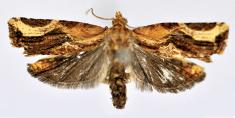
Isodemis stenotera is a moth of the family Tortricidae. It is known from China and Indonesia (Sumatra).
Pheos is a genus of moths in the family Blastobasidae. It contains only one species, Pheos aculeatus, which is found in Costa Rica.
Hallicis clavicula is a moth in the family Blastobasidae. It is found in Costa Rica.
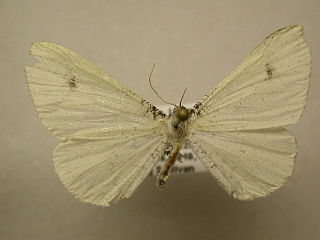
Macrosoma albida is moth-like butterfly described by William Schaus in 1901. It belongs to the family Hedylidae. Originally it belonged to the genus Hyphedyle.
Macrosoma albifascia is moth-like butterfly described by William Warren in 1904. It belongs to the family Hedylidae. Originally it belonged to the genus Phellinodes. A subspecies with the name M. albifascia albifascia was defined by Warren. Another subspecies M. albifascia expedita was proposed by Louis Beethoven Prout in 1932.
Macrosoma albimacula is moth-like butterfly described by William Warren in 1900. It belongs to the family Hedylidae. Originally it belonged to the genus Hyphedyle.
Macrosoma albipannosa is moth-like butterfly described by Louis Beethoven Prout in 1916. It belongs to the family Hedylidae. Originally it belonged to the genus Hedyle. Malcolm J. Scoble combined it with Macrosoma in 1986.
Macrosoma albistria is moth-like butterfly described by Louis Beethoven Prout in 1916. It belongs to the family Hedylidae. Originally it belonged to the genus Phellinodes. Malcolm J. Scoble combined it with Macrosoma in 1986.
Macrosoma amaculata is moth-like butterfly described by Malcolm J. Scoble in 1990. It belongs to the family Hedylidae.

Macrosoma bahiata is a moth-like butterfly species described by Cajetan von Felder and Alois Friedrich Rogenhofer in 1875. It belongs to the family Hedylidae. Originally it belonged to the genus Phellinodes. Malcolm J. Scoble combined it with Macrosoma in 1986.

Macrosoma cascaria is moth-like butterfly described by William Schaus in 1901. It belongs to the family Hedylidae. Originally it belonged to the genus Hyphedyle. Malcolm J. Scoble combined it with Macrosoma in 1986.

Macrosoma conifera is moth-like butterfly described by Warren in 1897. It belongs to the family Hedylidae. Originally it belonged to the genus Phellinodes. Malcolm J. Scoble combined it with Macrosoma in 1986.
Macrosoma coscoja is moth-like butterfly described by Paul Dognin in 1900. It belongs to the family Hedylidae. Originally it belonged to the genus Phellinodes. Malcolm J. Scoble combined it with Macrosoma in 1986.
Macrosoma costilunata is moth-like butterfly described by Louis Beethoven Prout in 1916. It belongs to the family Hedylidae. Originally it belonged to the genus Phellinodes.
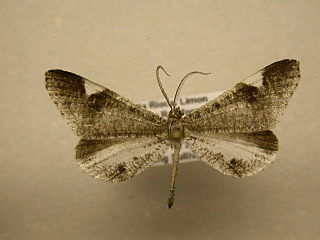
Macrosoma heliconiaria is moth-like butterfly described by Achille Guenée in 1857. It belongs to the family Hedylidae. Originally it belonged to the genus Hedyle. Malcolm J. Scoble combined it with Macrosoma in 1986. The species displays characteristics of both moths and butterflies and is believed to be the closest living ancestor to modern butterflies. Adaptions to avoid bat predation have given the species ultrasonic hearing and night vision through superposition optics.
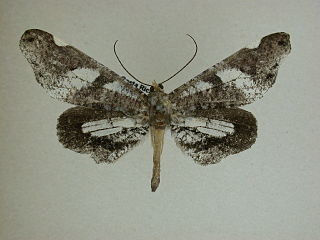
Macrosoma hyacinthina is moth-like butterfly described by William Warren in 1905. It belongs to the family Hedylidae. Originally it belonged to the genus Lasiopates. Malcolm J. Scoble combined it with Macrosoma in 1986.
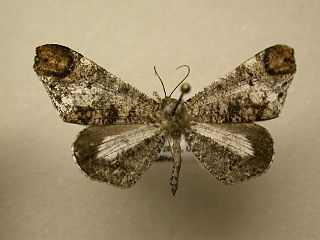
Macrosoma intermedia is moth-like butterfly described by Paul Dognin in 1911. It belongs to the Hedylidae family. Originally, it was in the genus Phellinodes.
Macrosoma klagesi is moth-like butterfly described by Louis Beethoven Prout in 1916. It belongs to the family Hedylidae. Originally it belonged to the genus Phellinodes. Malcolm J. Scoble combined it with Macrosoma in 1986.
Macrosoma lamellifera is a moth-like butterfly in the family Hedylidae. It was described by Louis Beethoven Prout in 1916. It is hypothesized to be closely related to Macrosoma rubedinaria and Macrosoma ustrinaria, and though these groups fall within the same clade, they do not form a monophyletic group.





